Introduction:
The parapet wall is a crucial structural element of our home. When completed, it forms a protective barrier at the end of the roof of the building or balcony. The parapet wall is crucial to the security of the building’s inhabitants. A parapet is usually the top part of a wall that goes over the roof and protects the roof, gutters, balconies, and walkways of houses, churches, castles, apartment buildings, commercial buildings, and other types of buildings. It could be made of bricks, stones, concrete, wood, or glass. A parapet can also stop a fire from spreading to a roof and protect against a sudden fall that could be fatal.
What is Parapet Wall?
The Parapet Wall is an extension of the wall along the roof’s edge; it serves as a barrier and can be found not only on roofs but also on balconies, terraces, and walkways. In layman’s terms, a parapet masonry wall is built when the outer walls of a building rise higher than the roof line.
Parapets are a crucial component of a roof, as they not only minimize the risk associated with a level floor but also provide a wide variety of options for making safe and efficient use of the roof itself. Reinforced cement concrete, steel, aluminum and glass are just a few elements that can be used to build these walls.
Purposes of Parapet Wall:
The terraces of the buildings are used for many different things, like sitting, walking, and other fun things. In that case, you must have a parapet wall on the roof. The safety of the people inside is greatly affected by the parapet walls. The purpose of the parapet wall is as follows:
- Allows people to get around without risking running off the roof’s edge.
- Allows for the safe and complete enjoyment of indoor activities.
- The building’s aesthetics are enhanced, and its cleanliness is maintained.
- Gives you some peace by blocking the view of curious onlookers.
Applications of Parapet Wall:
- To keep people safe and stop them from falling off the roof of the building.
- To give the building an appealing look.
- To hide and cover up the machines and tools on the roof.
- To stop dust from entering through the air on the roof
- To keep too much air from blowing onto the roof
- To prevent debris from falling off the roof.
- It improves a building’s overall aesthetic appeal.
- To keep cars from falling off bridges when they are on top of them and to keep people safe if bridges break.
Height of the Parapet Wall:
When building a parapet wall, the height of the wall is an important consideration. The height of the parapet wall should be at least 3 feet. At this height, the Parapet wall makes sure people are safe. The parapet wall has to be at least 9 inches thick.
Types of Parapet Walls:
A. Classification of Parapet Wall Based on Appearance:
1. Plain Parapet Wall:
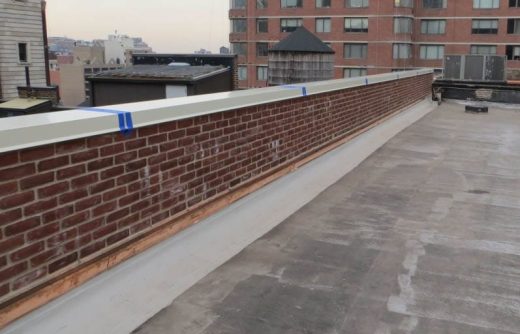
Fig 1: Plain Parapet Wall
Courtesy: structuralguide.com
The plain parapet walls are an extension of the wall built at the roof’s end. A plain parapet wall is easy to build and doesn’t require much upkeep. Plain parapet walls are only there to keep the people inside safe. The plain parapet wall has a corbel at the bottom and a concrete coping at the top. Plain parapet walls look very simple and don’t add to the beauty of the building.
2. Embattled Parapet Walls:
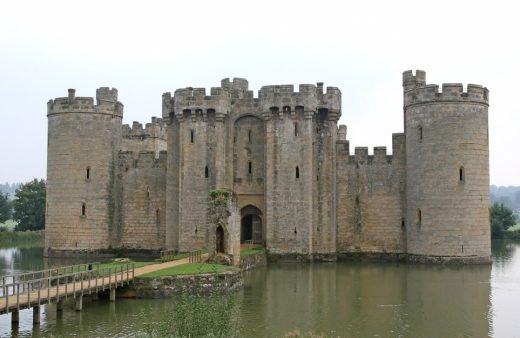
Fig 2: Embattled Parapet Wall
Courtesy: civilgyan.com
These ancient parapets are most often seen in forts and other historical buildings. It is also called a “castle parapet wall” because it was designed for castles in the past. They’re carved and have lower and higher portions. In the past, this method was used to shoot arrows through the lower angles. But if they are used in modern buildings, they can make the front of the building look very nice. These can be made with bricks and stones to keep the old look.
3. Paneled Parapet Walls:
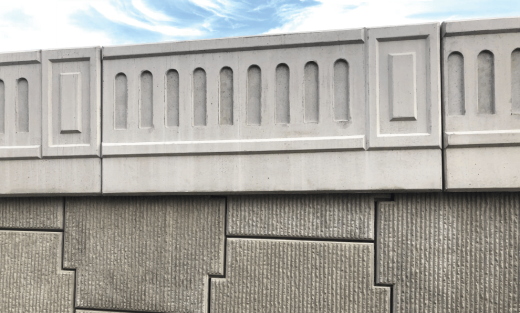
Fig 3: Paneled Parapet Wall
Courtesy: happho.com
This kind of parapet wall is similar to a plain one. Still, it has decorative panels on the outside, and the best thing about paneled parapet walls is that they are decorated outside with various panel designs. The walls of the paneled parapet have no openings. Paneled walls are easier and cheaper to build than other parapet walls. Panel parapet walls give buildings a nice, attractive look.
4. Perforated Parapet Walls:
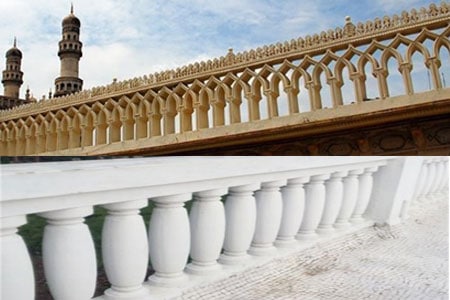
Fig 4: Perforated Parapet Wall
Courtesy: civiconcept.com
It is also a simple vertical extension over the slab. Still, instead of leaving the parapet plain and solid with concrete, perforations are made between the parapet wall to make it look nicer so that people or children can sit and look out through this parapet. Perforation is performed in various patterns and designs, like flower motifs, Mughal designs, geometric designs, or any other traditional pattern that fits the building’s theme. But instead of homes and businesses, these are more common in historical and religious buildings like temples, mosques, etc.
B. Classification of Parapet Wall Based on Shape and Configuration:
1. Flat Parapet Wall:
Flat parapet walls are very common and are used in many buildings. Flat parapet walls are usually found in residential units, commercial buildings, and structures with flat roofs. Flat parapet walls are made with little or no slope. Modern parapet walls, such as fiberglass and glass with steel railings, are available today.
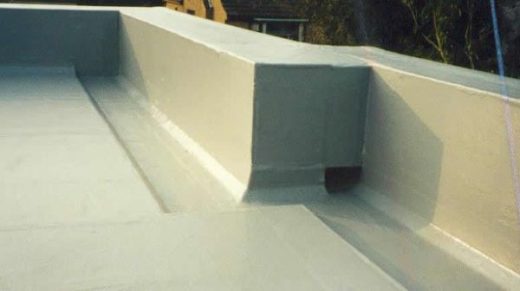
Fig 5: Flat Parapet Wall
Courtesy: civiljungle.com
2. Sloped Parapet Wall:
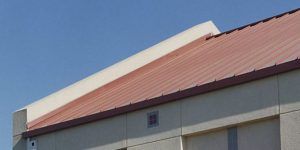
Fig 6: Sloped Parapet Wall
Courtesy: techyildiz.com
Sloped parapet walls are built with a slope and are great for getting rid of water after it rains. Under the wall, a waterproof membrane is put down to protect it as much as possible. These walls are made for buildings with sloped roofs, like industrial buildings, trussed buildings, etc. Some parapet walls made of stone look like they have a flat roof because the slope is so small and hard to see. The purpose of this wall is to keep water from getting through the roof.
3. Stepped Parapet Wall:
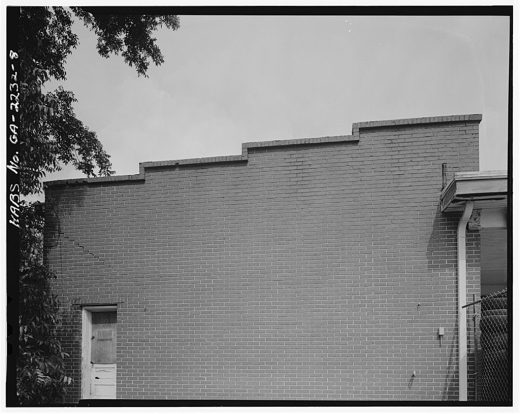
Fig 7: Stepped Parapet Wall
Courtesy: loc.gov
This kind of parapet wall is often used on buildings with sloped roofs. This type of parapet is built in the shape of a step, like a ladder. On sloping ceilings, stepped parapet walls are used for decoration, from where the roof of the building looks flat. It helps make the building look good from the front. Also, this style of parapet wall can hide curbs that slope down.
4. Curved Parapet Wall:
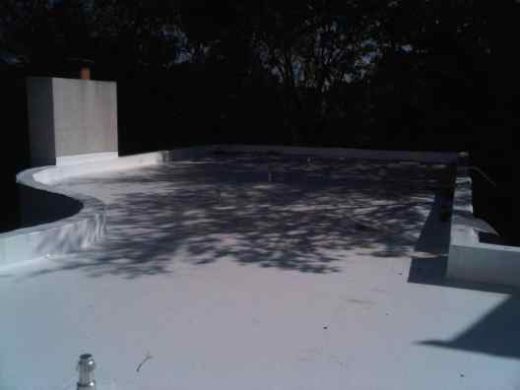
Fig 8: Curved Parapet Wall
Courtesy: loc.gov
Curved parapet walls, also called “arched walls,” are good for flat and sloped roofs. The curved parapet gives the height of the building. This type of parapet wall is for small houses and makes the building look bigger. Also, curved parapet walls work best with roofs that slope or lean.
Modern Types of Parapet Walls:
People have come up with new designs and types of parapet walls in recent years to make them safer and look better. Some modern parapet walls are fiberglass, steel railings, and so on. These days, people also use two or more parapet walls together. The composite parapet wall is the name for this kind of parapet wall. For example, a building’s appearance can be improved by adding a perforated parapet wall with glass and steel railings.
Wall Coping to the Parapet Wall:
It is important to install wall coping on the parapet wall to protect it from rain and snow. It’s a cap placed over the top of the wall to prevent water from leaking. The coping on the parapet wall provides shelter from the elements (rain, snow, etc.). Rain won’t be able to make it through the parapet wall as easily if you build a coping around it.
Factors to Consider when Constructing a Parapet Wall:
- The parapet should be at least three feet high.
- The wall should be at least nine inches thick.
- Under the mortar bed, there should be wall penetration flashing to keep water from getting into the masonry wall of the parapet.
- Give each wall cavity a way to breathe.
- Use round “soffit vents” that let rainwater out, especially if the venting holes are in a visible place.
- It’s important to keep the wall away from things like plumbing, electrical wiring, terrace farming, etc., inside the building.
- If holes for venting aren’t needed, cover them up so bugs and insects can’t get in.
Conclusion:
The Parapet Wall is an extension of the wall at the roof’s edge that makes a barrier. It can be used for more than just roofs, like balconies, terraces, walkways, and other structures. Even though the world is changing fast and is based on technology, parapet walls are still important. There are a lot of decorative parapet walls on modern buildings that are based on functional battlements. But parapet walls are also important parts of any building because they keep the people inside safe.
References:
1. lnhod. “Parapet Walls: What They Are and How to Use Them in Construction.” Techyildiz, 25 Sept. 2022, www.techyildiz.com/parapet-wall-in-construction.
2. Steffen, John. “What Is Parapet Wall | Parapet Wall Purpose and Types – ConstructUpdate.com.” ConstructUpdate.com, 28 Aug. 2021, www.constructupdate.com/parapet-wall-purpose.
3. Prasad. “Parapet Walls – Types, Uses and Construction – Structural Guide.” Structural Guide, 9 Nov. 2020, www.structuralguide.com/parapet-walls.
4. “Parapet Walls: History, Uses, and Types of Parapet Walls.” MT Copeland, 31 Jan. 2022, mtcopeland.com/blog/what-is-a-parapet-wall.
5. “Parapet Wall – Types and Benefits.” Parapet Wall – Types and Benefits, 21 Dec. 2021, constrofacilitator.com/parapet-wall-types-and-benefits.
6. Happhoadmin7. “Parapet Wall?: Types, Advantages and Modern Types – Happho.” Happho, 1 Oct. 2021, happho.com/parapet-wall-types-advantages-modern-types.
7. “Parapet.” Parapet – Designing Buildings, www.designingbuildings.co.uk/wiki/Parapet. Accessed 23 Dec. 2022.
If you have a query, you can ask a question here.


